After several days in Washington D.C., I continued north through Baltimore, Maryland. There I stopped at Ft. McHenry.
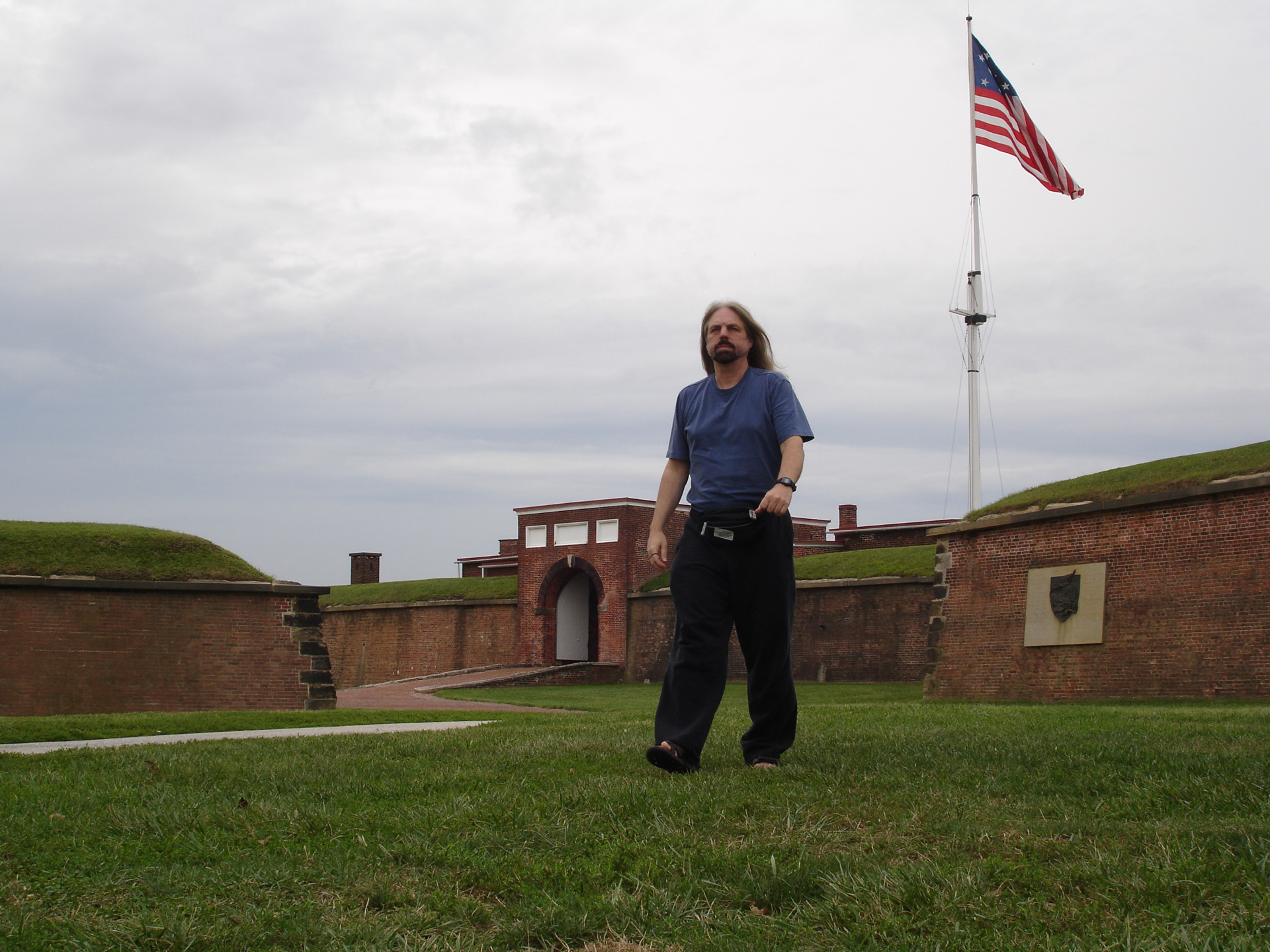
Ft. McHenry
Sep 29, 2010
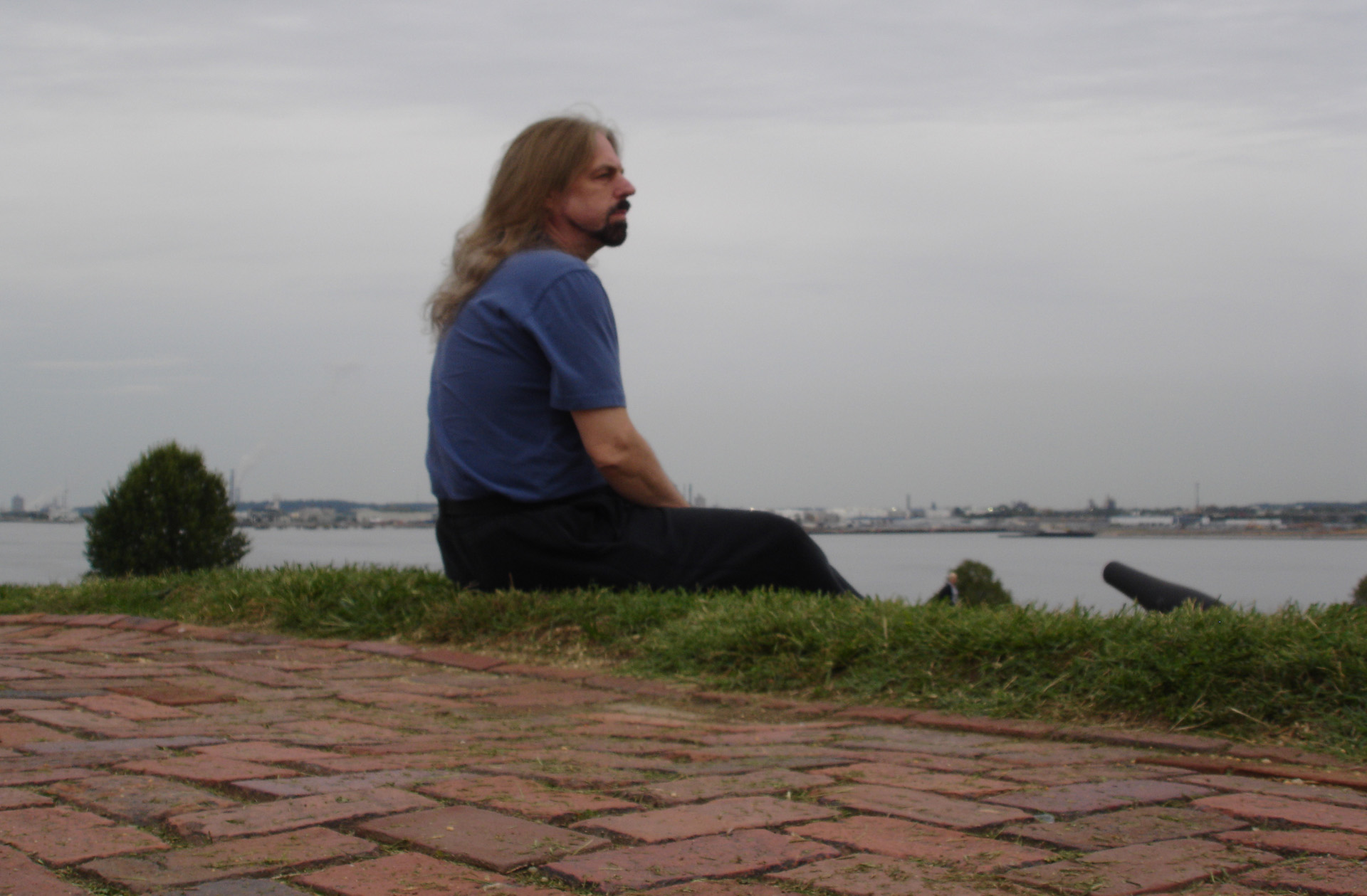
Ft. McHenry overlooking the harbor.
Sep 29, 2010
The fort was an important Civil War site, but of course it is best know as the birthplace of the Star Spangled Banner.
My next stop was Philadelphia, Pennsylvania. There's a tremendous amount of history there.
The original idea for a Declaration of Independence had been made by Richard Henry Lee. Soon after, he returned to Virginia on personal business.
During this time, Jefferson wrote the Declaration of Independence and made a few copies, one of which he sent to Lee in early July, 1776.
This is that copy, written by Jefferson himself.
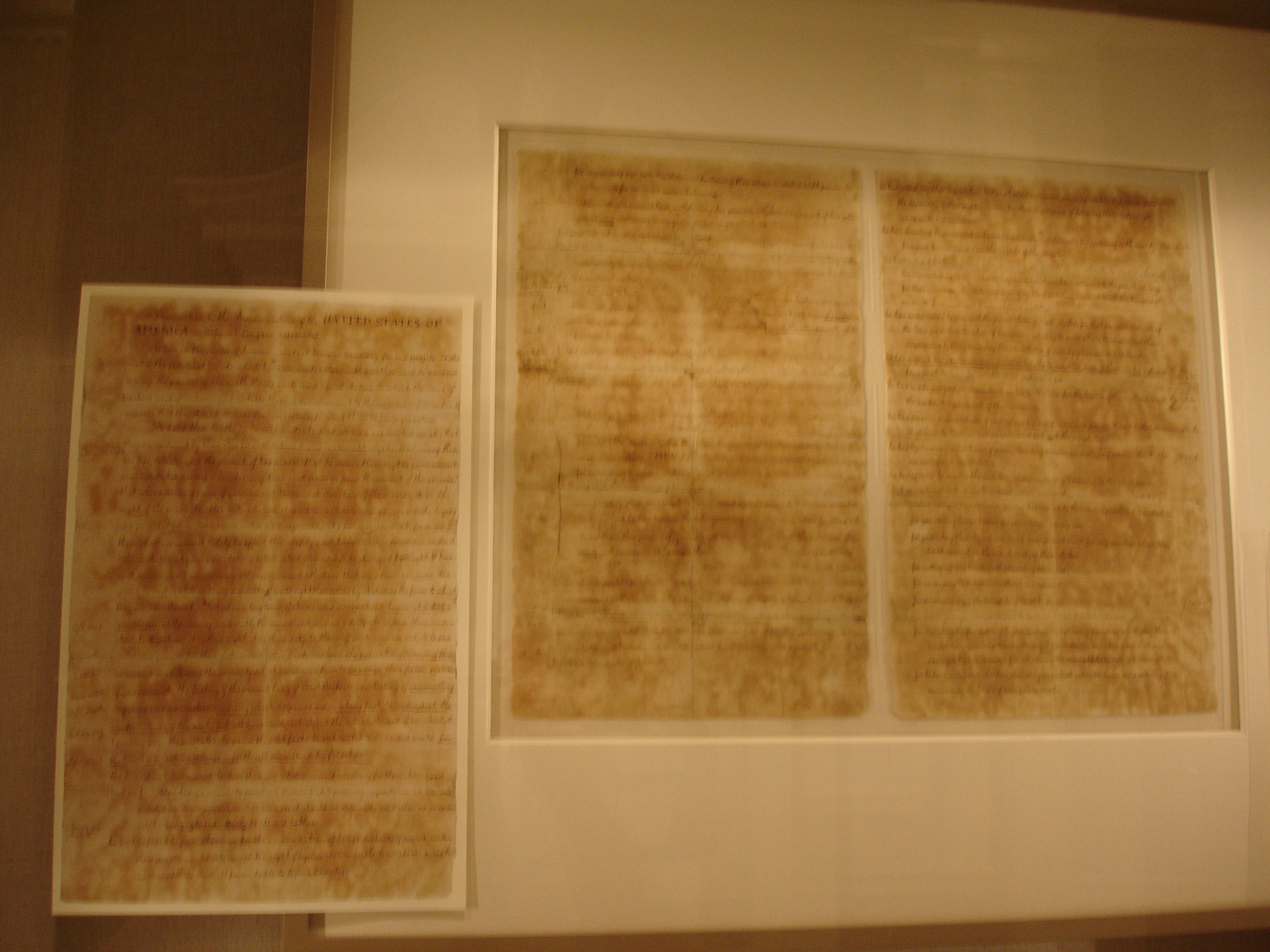
Declaration of Independence
Sep 29, 2010
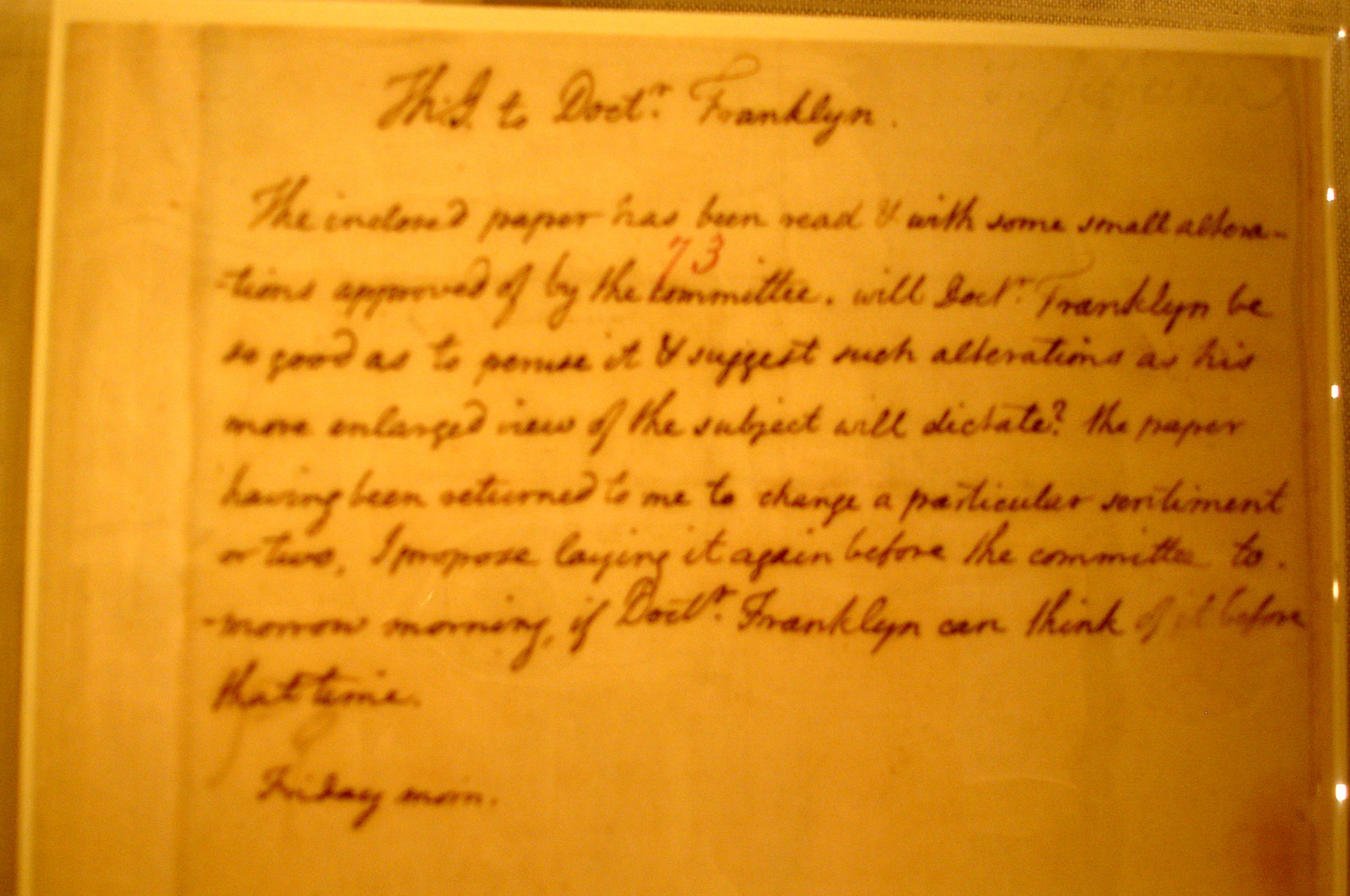
Letter to "Dr. Franklin"
Sep 29, 2010
Accompaning the original Declaration was this letter, again in Jefferson's handwriting, to Benjamin Franklin, asking his opinion of the Declaration.
Text from the letter:
This to Doct. Franklyn:
The inclosed paper has been read and with some small alterations approved of by the committee. Will Doctr. Franklyn be so good as to peruse it and suggest such alterations as his more enlarged view of the subject will dictate? The paper having been returned to me to change a particular sentiment or two, I propose laying it again before the committee tomorrow morning, if Doctr. Franklyn can think of it before that time.
This is the spot where Ben Franklin is burried.
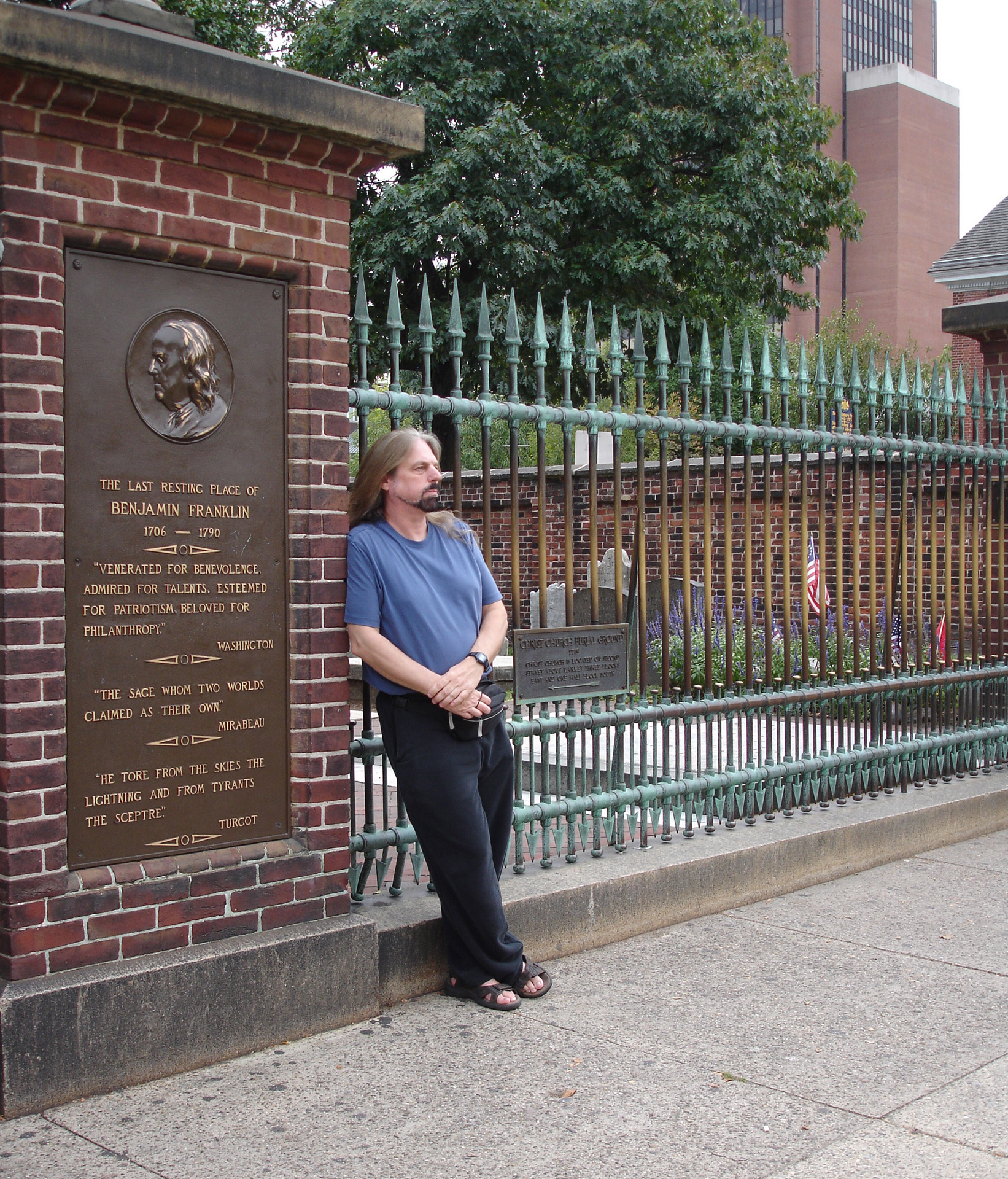
Christ Church Cemetary
Sep 29, 2010
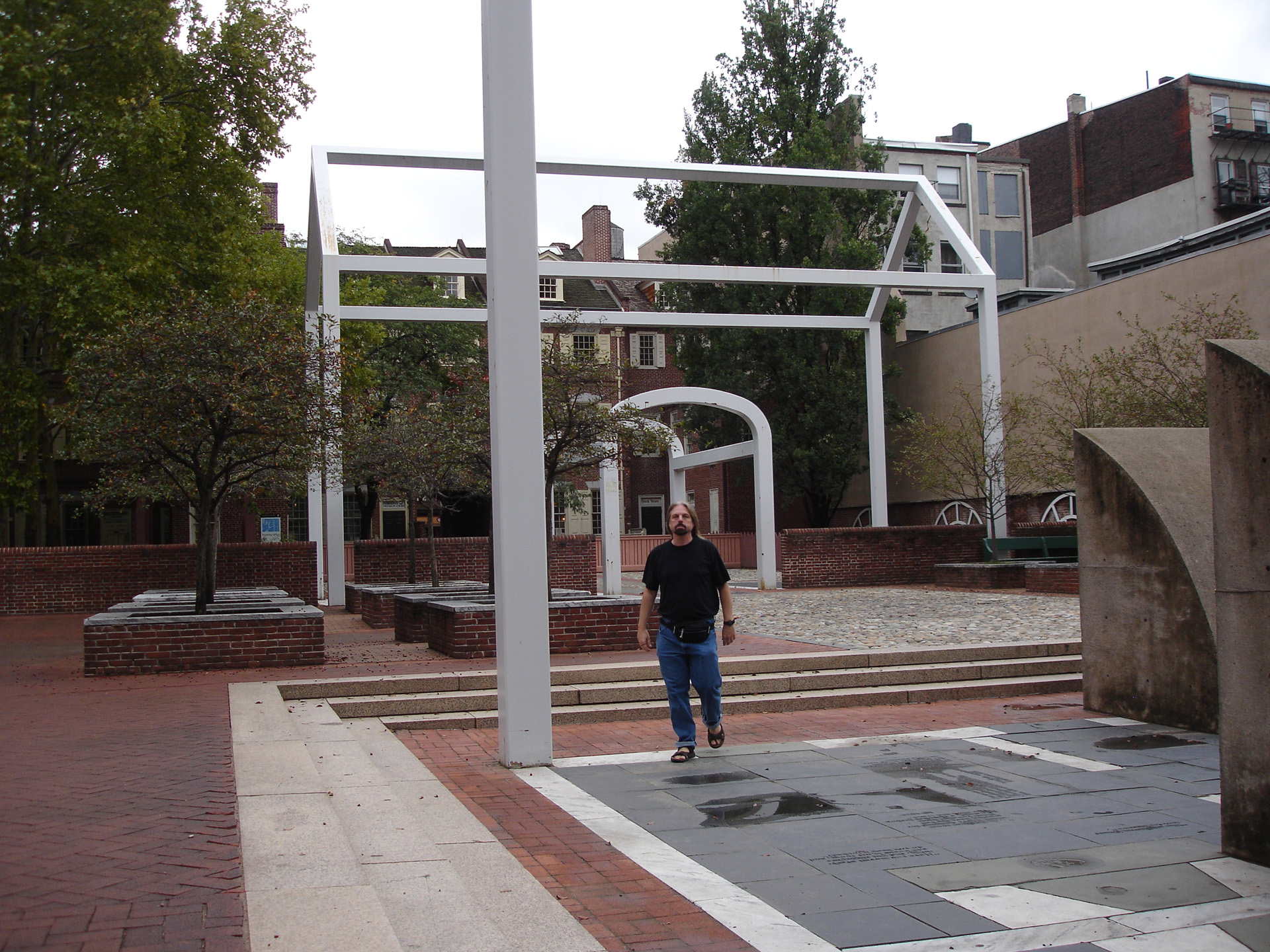
Benjamin Franklin Museum
Sep 30, 2010
In this yard, now known as Franklin Court, formerly stood the home of Benjamin Franklin. In his later years, Franklin also built three Market Street houses and a Print Shop for his printer-publisher grandson, Benjamin Franklin Bache.
Franklin first saw the site at 17, while lodging with the family of his future wife, Deborah Read, in a small house at the front of this lot. once together, Benjamin and Deborah inherited and acquired the neighboring properties.
By the early 1760's, Franklin contracted with a master carpenter, Robert Smith, to build a large house to stand in a quiet garden deep in the middle of the block.
Franklin left for England while the house was under construction during 1763-65. Tragically, before Benjamin's return to his new home, Deborah had died.
Fortunately for Ben, his daughter Sarah and husband, Richard Bache, had moved into the house, filling it with grandchildren. Returning in 1775, Franklin soon found the house too small; at the age of 81, he added an extension.
--from the plaque "The History of Franklin Court"
This is the room where the Constitutional Convention was held.
The chair at the front of the room is the actual chair where George Washington sat as he presided over the proceedings. This is the chair with the sun engraving that Franklin famously observed.
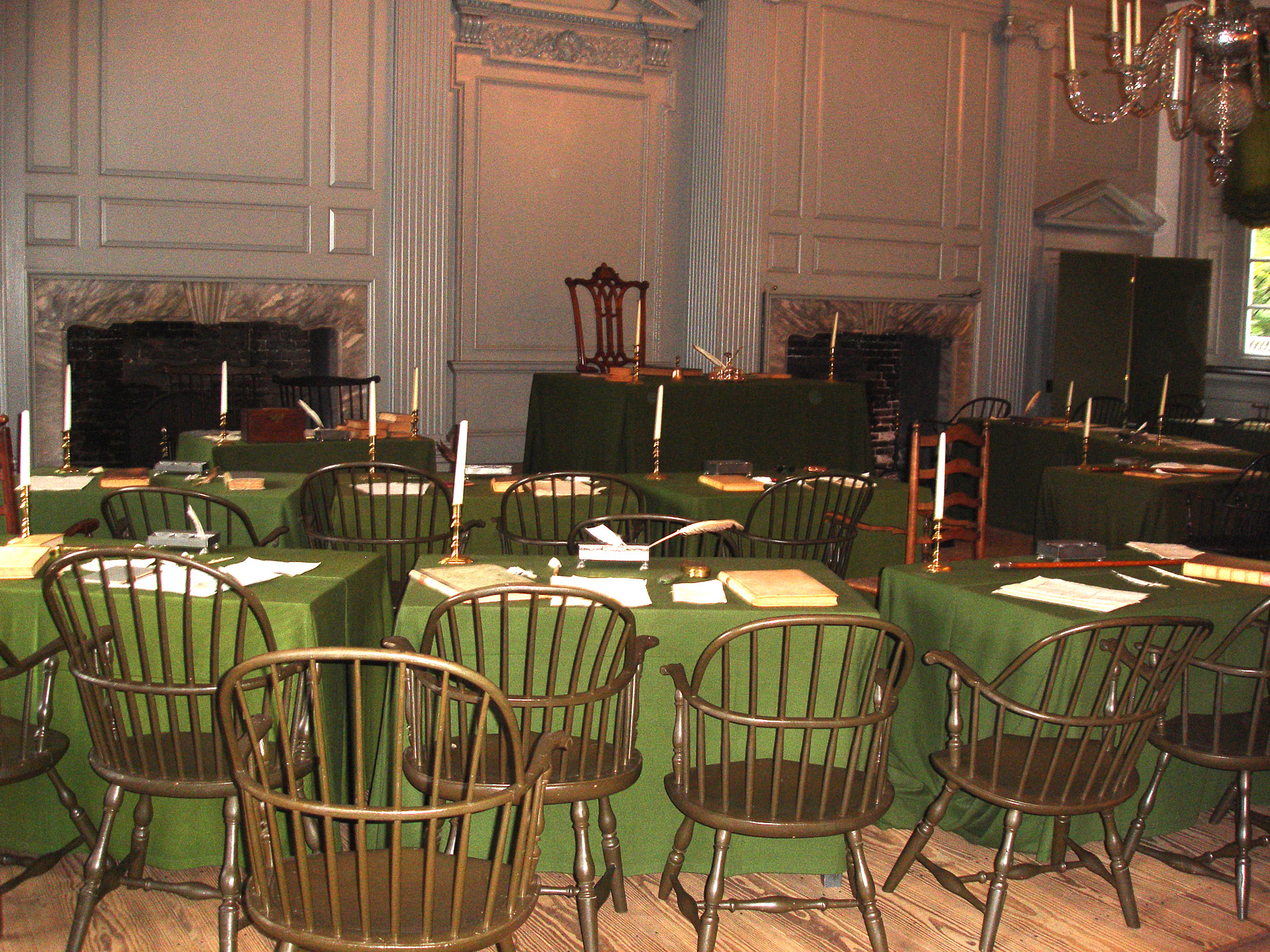
Interior of Independence Hall
Sep 30, 2010
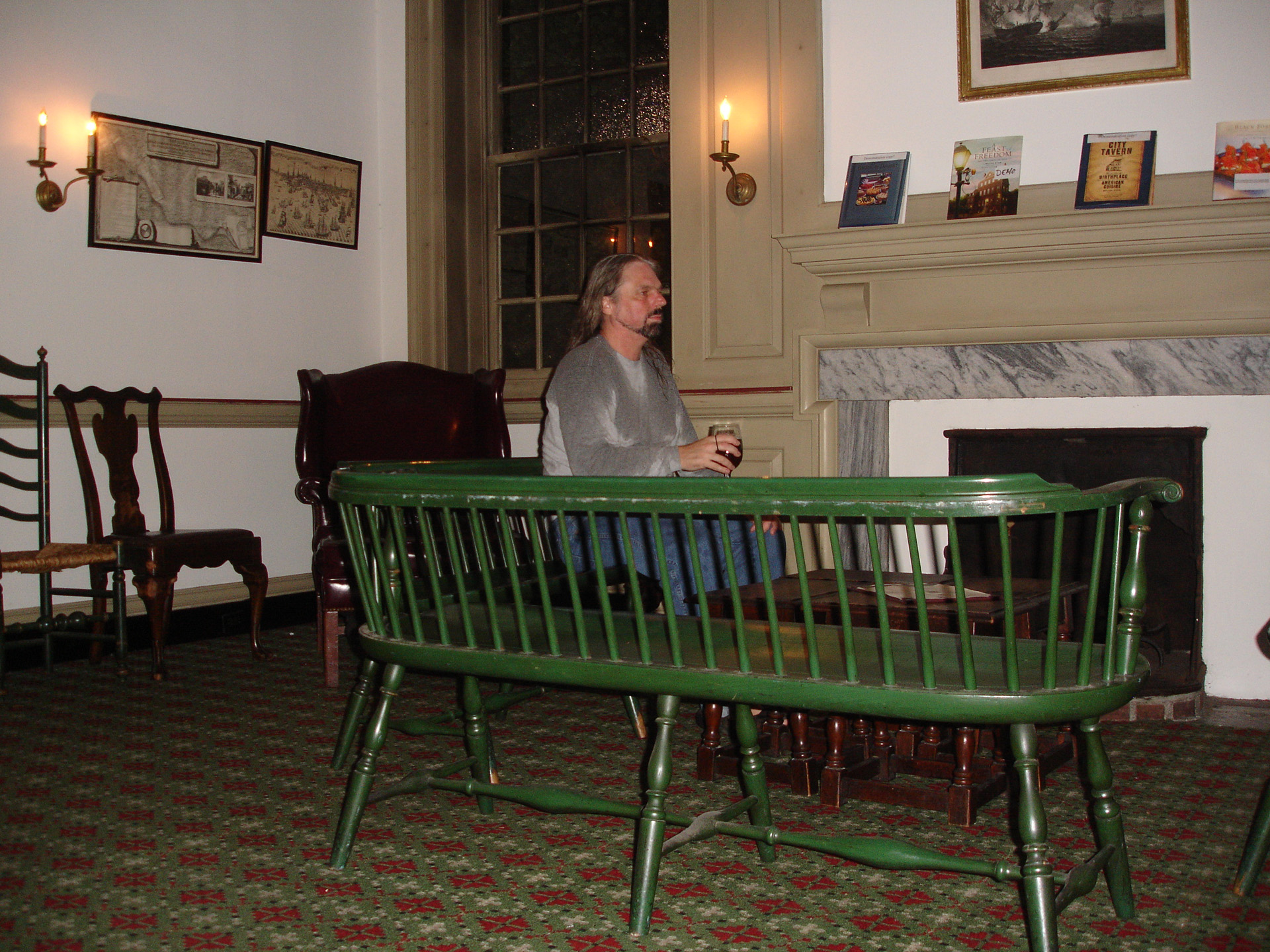
City Tavern
Sep 30, 2010
This was the reading room at the City Tavern, which was built in 1773. In these rooms, the founders met, just blocks from Independence Hall, and plotted the American revolution.
(It was pouring rain that evening, and as you can see, I arrived soaking wet!)
Of course back then, you couldn’t go to Kroger’s and get a six pack.
These guys had to brew their own beer. The proprietors have actually found the recipes that four of them used.
I started with Thomas Jefferson’s 1774 Tavern Ale, which he brewed twice a year at Monticello. It’s a very dark, over 7% beer.
George Washington’s Tavern Porter is the strongest and Alexander Hamilton’s Federalist Ale is the most like what we drink today.
I finished up with one of Ben Franklins Poor Richard’s Tavern Spruce, written while he was ambassador to France. This one is almost black. It’s like no beer I’ve ever tasted. (And I’ve tasted a lot of beer!)
This had been a commercial building in the 1770s and the owner rented the two upstairs rooms for extra money. Little did he know he’d cemented the building’s place in history when he rented them to Thomas Jefferson.
One room was designated as an office, the room where Jefferson actually wrote the Declaration of Independence
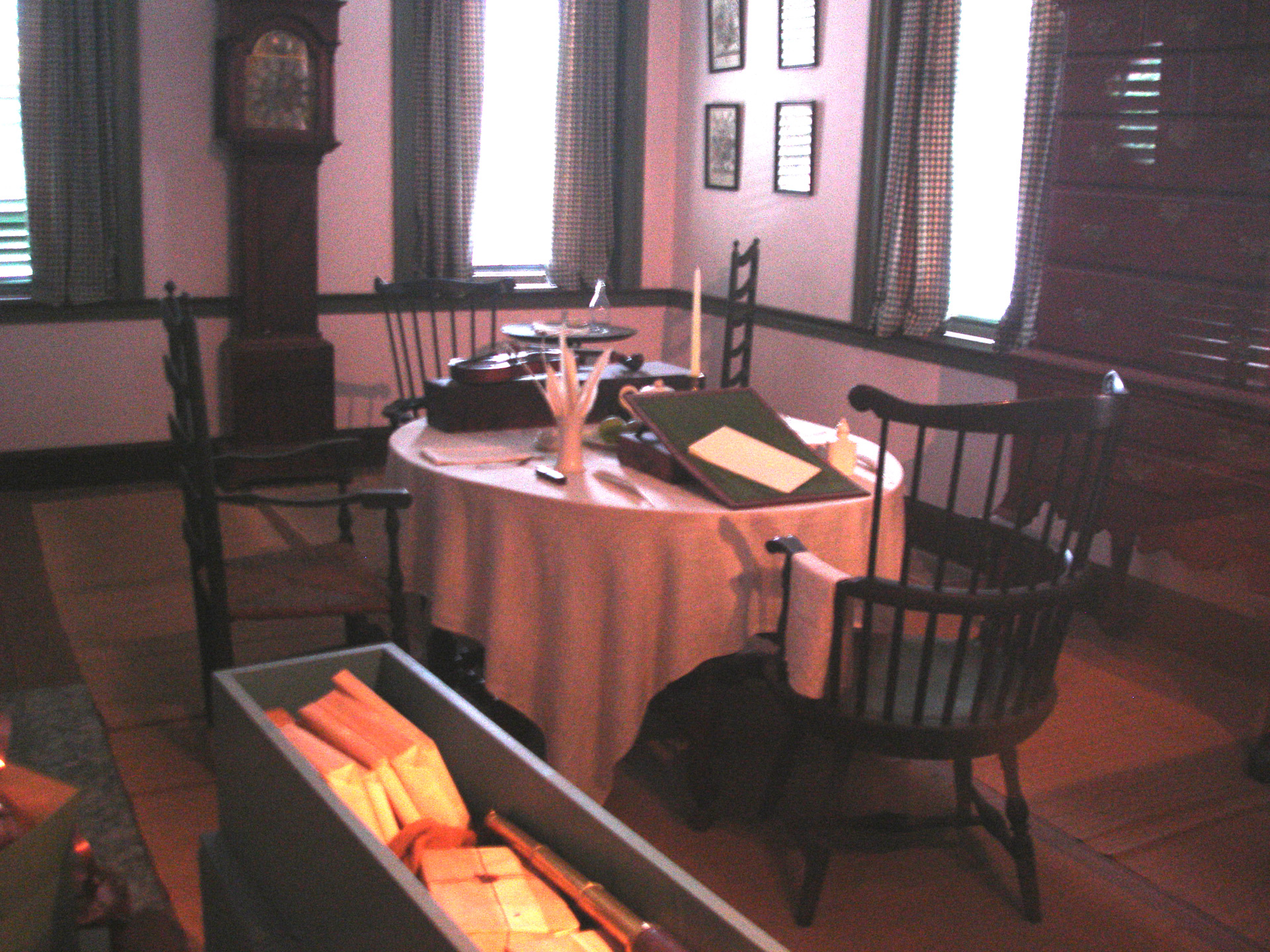
Declaration Center
Oct 01, 2010
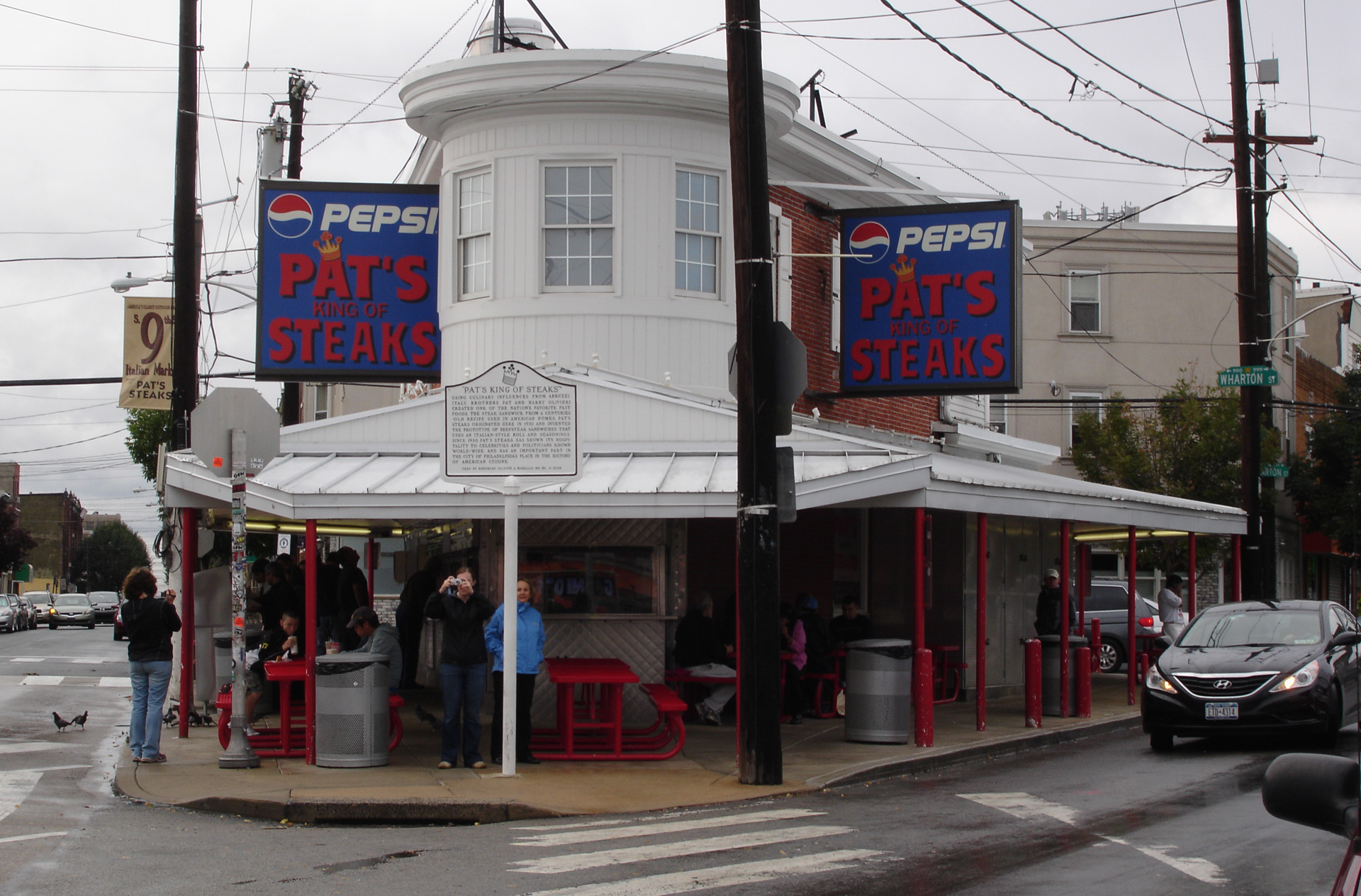
Pat's Steaks
Oct 01, 2010
Through my research, I had discovered the place where the Philly Cheesesteak was actually invented…a place called Pat’s in South Philly.
Using culinary influences from Abruzzi, Italy, brothers Pat and Harry Olivieri created one of the nation's favorite fast foods, the steak sandwich, from a centuries-old recipe used in American homes. Pat's steaks originated here in 1930 and invented the prototype of beefsteak sandwiches that uses an Italian-style roll and seasonings. Since 1930, Pat's Steaks has shown its hospitality to celebrities and politicians know world-wide, and has an important part in the city of Philadelphia's place in the history of American cuisine.
--from the plaque "Pat's King Of Steaks" - text by historian Celeste A. Morello, Ms, Ma in 2008